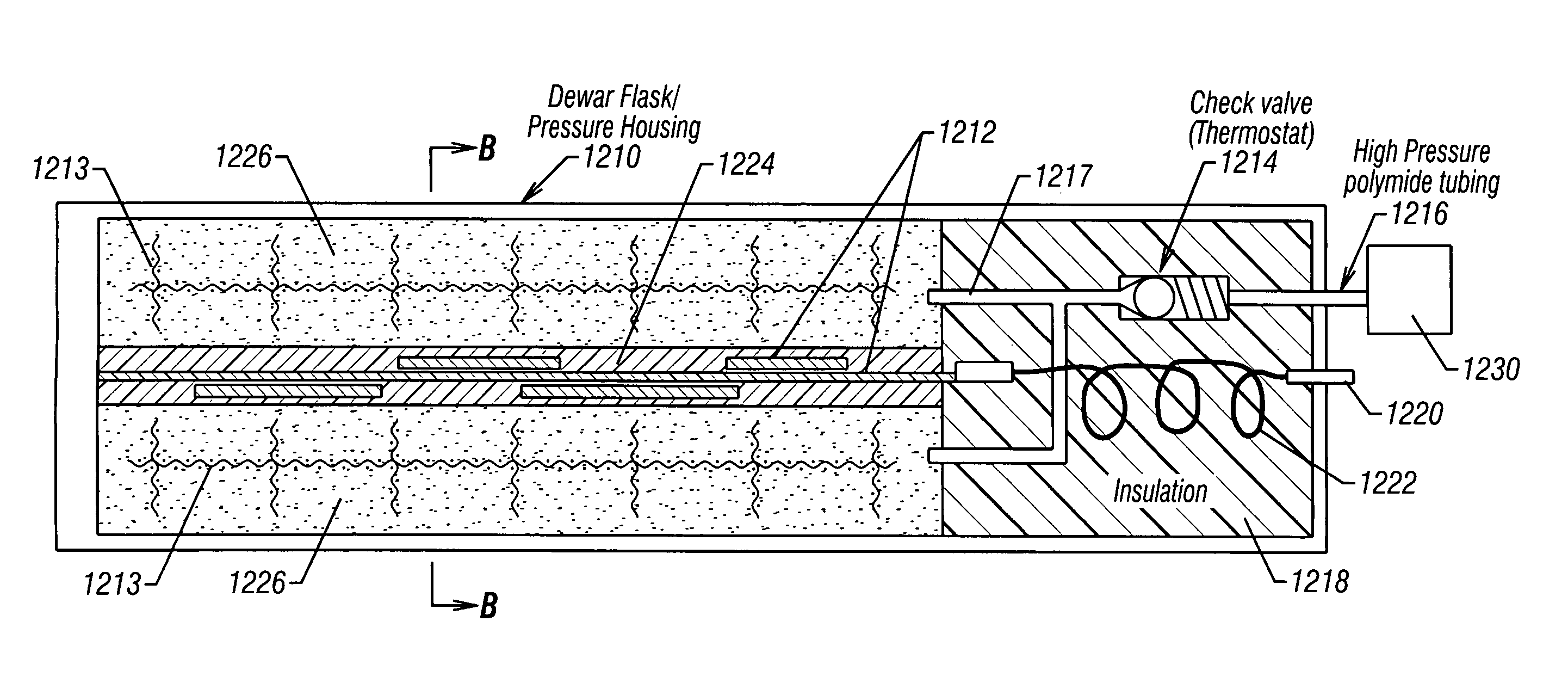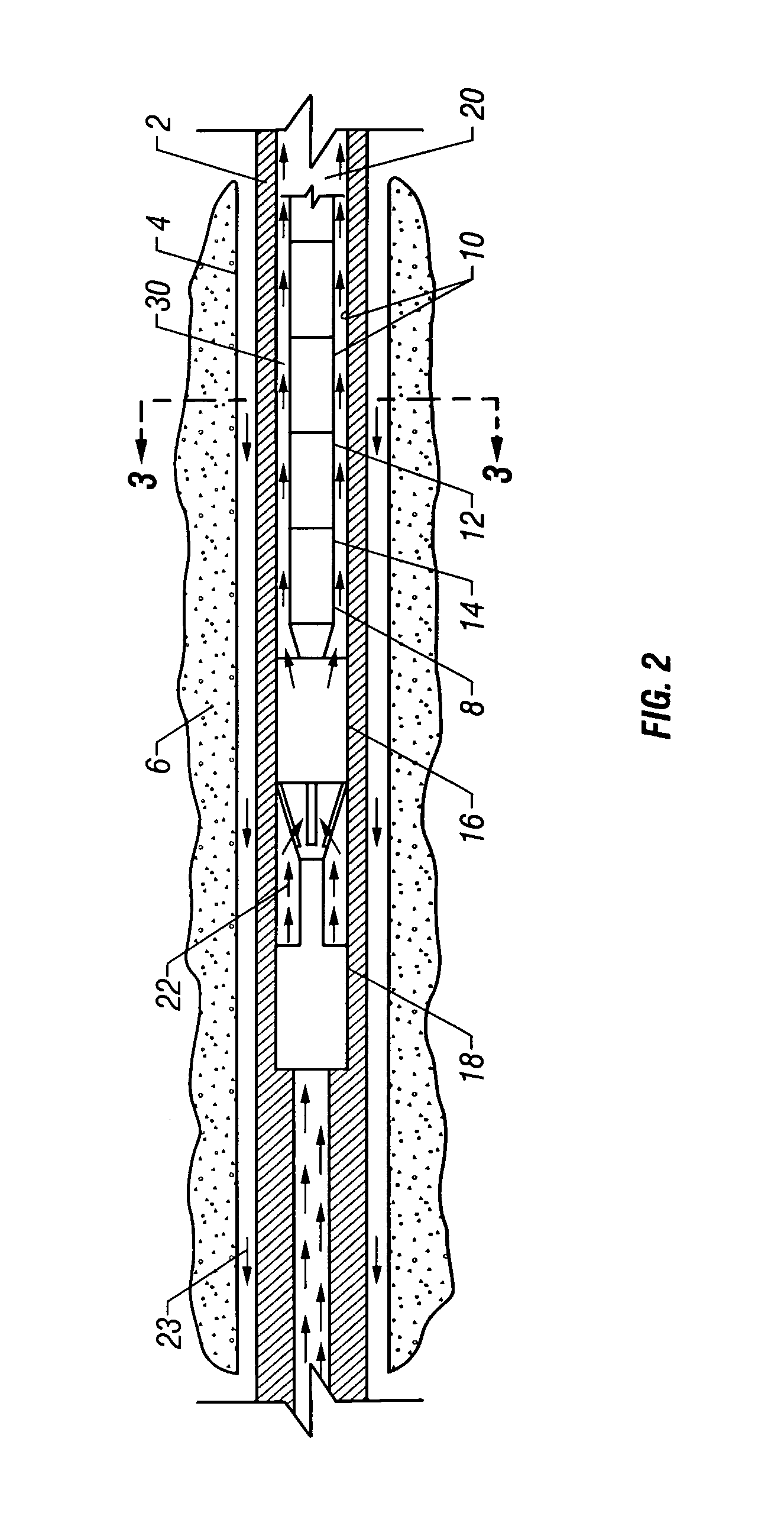Downhole sorption cooling and heating in wireline logging and monitoring while drilling
a technology of sorption cooling and wireline logging, which is applied in the field of downhole tools, can solve the problems of reducing the life expectancy of thermally exposed electronic components, generating heat in many electronic components, and reducing the life expectancy of electronic components. the effect of cooling the electronic components and facilitating the transfer of hea
- Summary
- Abstract
- Description
- Claims
- Application Information
AI Technical Summary
Benefits of technology
Problems solved by technology
Method used
Image
Examples
Embodiment Construction
[0026]The present invention provides a structure and method for a downhole tool component cooling system. The downhole tool component cooling system of the present invention does not require an external electrical power source. The cooling system of the present invention utilizes the potential energy of sorption to remove heat from a temperature sensitive tool component. The sorption energy removes heat from the tool component and moves the heat to a second, hotter region in the downhole tool. The cooling region of the tool, adjacent to the temperature-sensitive component which is sorption cooled, contains a liquid source (such as water) which in the present example is a solid form of water to avoid spillage. The solid source of water releases its water as its temperature increases. Thus, this solid source of water can be a low-temperature hydrate, desiccant, sorbent, or polymeric absorber from which water (or some other liquid) vapor is generated when heated sufficiently. For examp...
PUM
 Login to View More
Login to View More Abstract
Description
Claims
Application Information
 Login to View More
Login to View More - R&D
- Intellectual Property
- Life Sciences
- Materials
- Tech Scout
- Unparalleled Data Quality
- Higher Quality Content
- 60% Fewer Hallucinations
Browse by: Latest US Patents, China's latest patents, Technical Efficacy Thesaurus, Application Domain, Technology Topic, Popular Technical Reports.
© 2025 PatSnap. All rights reserved.Legal|Privacy policy|Modern Slavery Act Transparency Statement|Sitemap|About US| Contact US: help@patsnap.com



